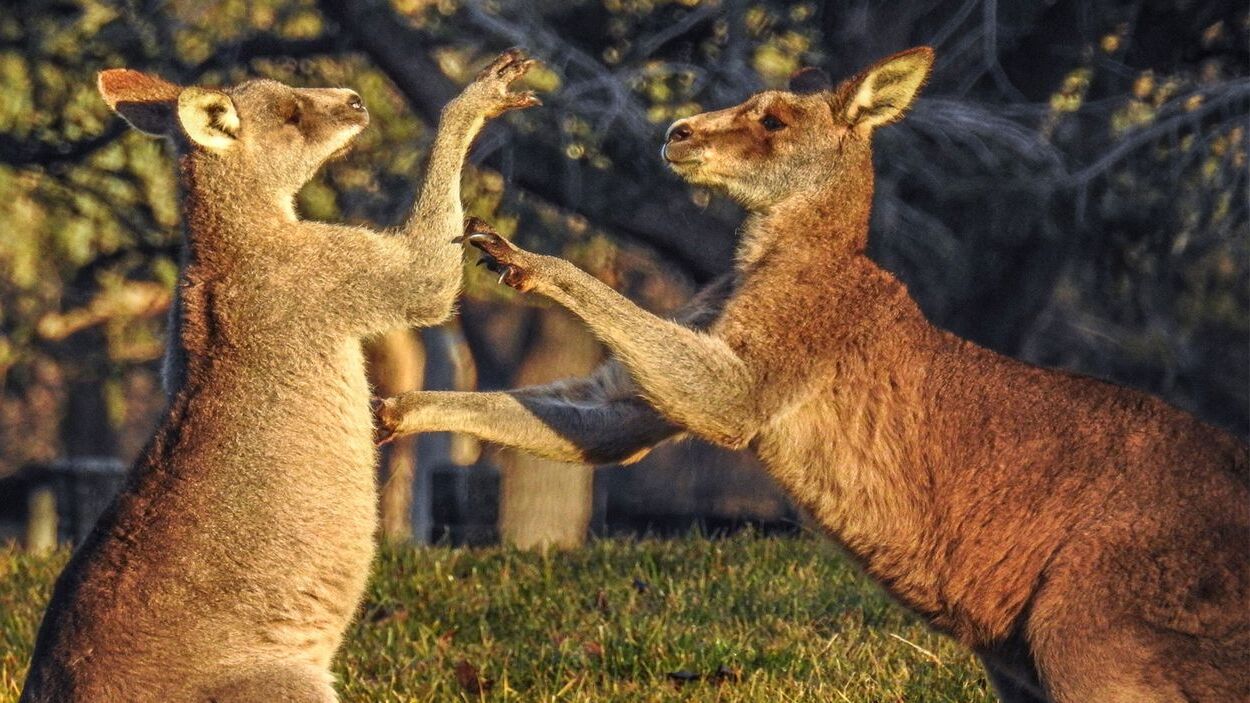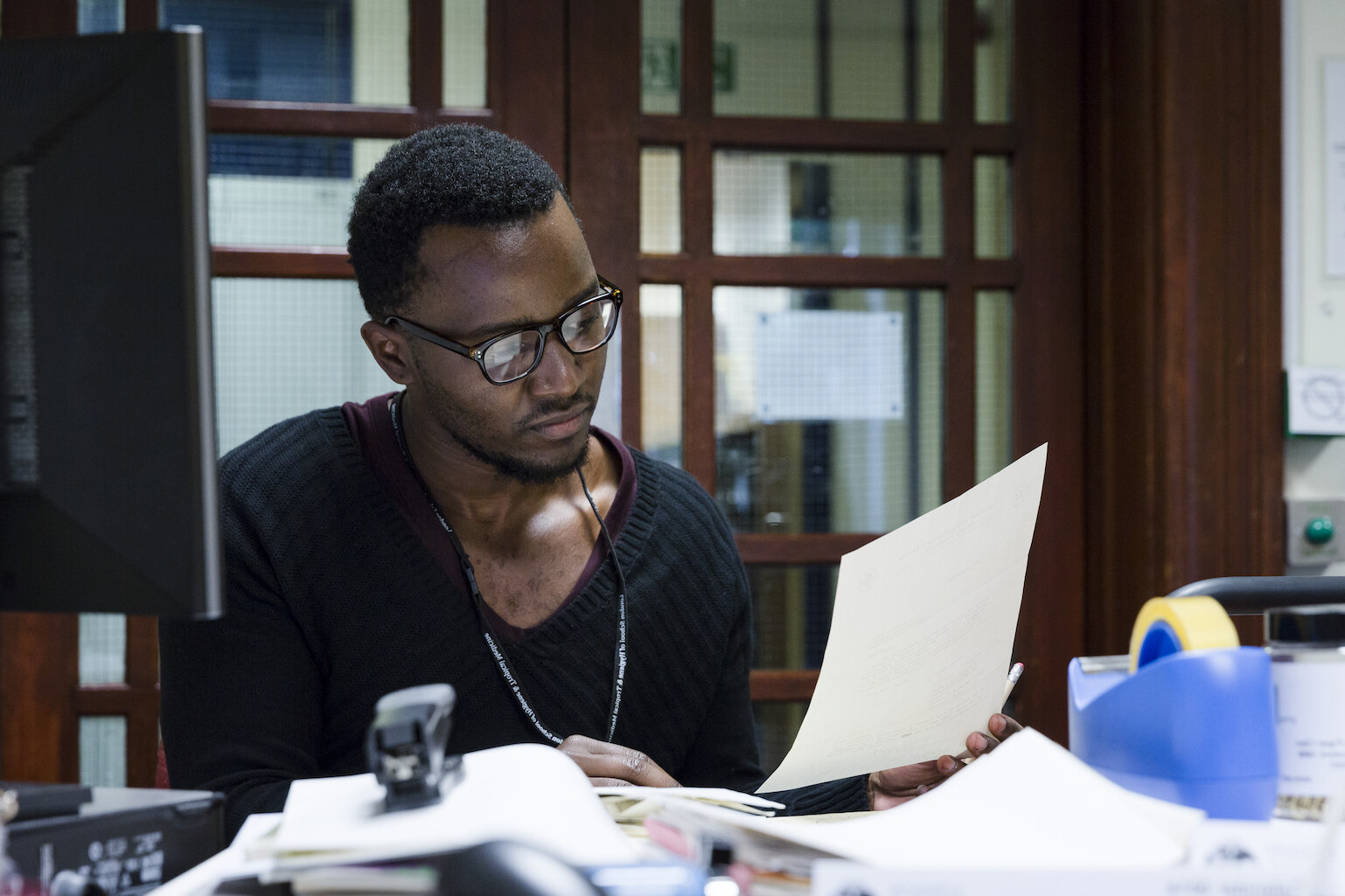
Did you know kangaroos can box? Yes, those cute marsupials from Australia have a surprising talent for throwing punches. Kangaroo boxing isn't just a myth; it's a real behavior observed in the wild. These fascinating creatures use their strong legs and sharp claws to spar with each other, often over territory or mates. Their boxing matches can be intense, showcasing their agility and strength. Imagine two kangaroos standing on their hind legs, balancing with their tails, and jabbing at each other like seasoned fighters. Intrigued? Let's dive into 35 amazing facts about kangaroo boxing that will leave you hopping with excitement!
Key Takeaways:
- Kangaroo boxing is a natural behavior for male kangaroos to establish dominance and practice survival skills, but not all kangaroos engage in this intense activity.
- Kangaroo boxing plays a crucial role in the social structure of kangaroo groups, helping to determine hierarchy, mating rights, and territorial disputes, while also promoting bonding and reducing aggression.
What is Kangaroo Boxing?
Kangaroo boxing is a fascinating behavior observed in kangaroos, particularly males. These animals engage in boxing matches that can be both entertaining and intense. Here are some intriguing facts about this unique behavior.
-
Kangaroo boxing is a natural behavior: Male kangaroos often box to establish dominance and win the right to mate with females.
-
It’s not just about fighting: Boxing also helps kangaroos practice their balance and coordination, which are essential for survival.
-
Boxing matches can be intense: These bouts can last several minutes and involve powerful kicks and punches.
-
Kangaroos use their tails for balance: During a boxing match, kangaroos lean back on their tails to deliver strong kicks with their hind legs.
-
Not all kangaroos box: While most male kangaroos engage in boxing, it’s less common among females and younger kangaroos.
The Techniques of Kangaroo Boxing
Kangaroo boxing involves a variety of techniques that make these matches both complex and captivating. Here are some of the key techniques used by kangaroos during a boxing match.
-
Jabbing with forepaws: Kangaroos use their forepaws to jab at their opponents, much like human boxers.
-
Powerful hind leg kicks: They deliver powerful kicks with their hind legs, often leaning back on their tails for support.
-
Grappling and wrestling: Kangaroos also grapple and wrestle with each other, trying to throw their opponent off balance.
-
Using their tails as a third leg: The tail acts as a third leg, providing stability and support during a fight.
-
Feigning and dodging: Kangaroos use feints and dodges to avoid their opponent’s attacks and create openings for their own strikes.
The Role of Kangaroo Boxing in Social Structure
Kangaroo boxing plays a crucial role in the social structure of kangaroo groups, also known as mobs. Here’s how boxing influences their social dynamics.
-
Establishing dominance: Boxing helps determine the hierarchy within a mob, with the strongest males gaining higher status.
-
Mating rights: Dominant males earn the right to mate with females, ensuring that the strongest genes are passed on to the next generation.
-
Territorial disputes: Boxing can also help resolve territorial disputes between males.
-
Bonding and socialization: Young kangaroos may engage in play boxing to bond and socialize with their peers.
-
Reducing aggression: Regular boxing matches can help reduce overall aggression within a mob by providing an outlet for competitive behavior.
The Evolutionary Significance of Kangaroo Boxing
Kangaroo boxing has evolved over time to serve several important functions. Here are some evolutionary aspects of this behavior.
-
Survival of the fittest: Boxing ensures that the strongest and fittest males have the best chance of reproducing.
-
Natural selection: This behavior helps drive natural selection, promoting the development of stronger, more agile kangaroos.
-
Adaptation to environment: Boxing skills can help kangaroos defend themselves against predators and other threats.
-
Energy-efficient combat: Kangaroos have evolved to use their energy efficiently during boxing matches, conserving resources for other activities.
-
Communication through combat: Boxing can also serve as a form of communication, signaling strength and fitness to other members of the mob.
Famous Kangaroo Boxers
Throughout history, some kangaroos have gained fame for their boxing prowess. Here are a few notable examples.
-
Roger the Ripped Kangaroo: Known for his impressive physique, Roger became an internet sensation for his muscular build and boxing skills.
-
Jack the Fighting Kangaroo: A famous boxing kangaroo from the early 20th century, Jack was known for his performances in circuses and exhibitions.
-
Boomer the Boxing Kangaroo: Boomer gained fame for his role in the 1978 film “Matilda,” where he played a boxing kangaroo.
-
Kangaroo Jack: Although a fictional character, Kangaroo Jack from the 2003 film of the same name brought attention to the concept of kangaroo boxing.
-
Boxing kangaroos in cartoons: Characters like K.O. Kangaroo from the “Tekken” video game series and Hoppy the Marvel Bunny have popularized the idea of boxing kangaroos in pop culture.
The Ethics of Kangaroo Boxing in Entertainment
While kangaroo boxing is a natural behavior, its use in entertainment raises ethical concerns. Here are some points to consider.
-
Animal welfare: Using kangaroos for boxing matches in circuses and exhibitions can raise animal welfare concerns, as it may cause stress and injury.
-
Exploitation: Some argue that using kangaroos for entertainment exploits their natural behavior for profit.
-
Conservation efforts: Ethical concerns have led to increased efforts to protect kangaroos and their natural habitats.
-
Public perception: The portrayal of kangaroo boxing in media can influence public perception and attitudes toward these animals.
-
Regulations and guidelines: Many countries have implemented regulations and guidelines to ensure the ethical treatment of animals used in entertainment.
Fun Facts About Kangaroo Boxing
Kangaroo boxing is full of interesting and surprising facts. Here are a few more to round out your knowledge.
-
Kangaroo boxing gloves: In some historical exhibitions, kangaroos were fitted with boxing gloves to make the matches more entertaining.
-
Boxing as a sport: In the early 20th century, kangaroo boxing was sometimes promoted as a sport, with matches held in arenas and theaters.
-
Training kangaroos: Some trainers have taught kangaroos to box on command, using positive reinforcement techniques.
-
Boxing in the wild: While boxing is most commonly observed in captivity, wild kangaroos also engage in this behavior.
-
Kangaroo boxing in art: The unique behavior of kangaroo boxing has been depicted in various forms of art, from paintings to sculptures.
Kangaroo Boxing: A Wild Spectacle
Kangaroo boxing isn't just a quirky behavior; it's a fascinating glimpse into the lives of these unique marsupials. Male kangaroos use boxing to establish dominance, secure mates, and defend territory. Their powerful hind legs and sharp claws make these bouts intense and sometimes dangerous. While it might look amusing, it's serious business for kangaroos.
Understanding this behavior helps us appreciate the complexity of kangaroo social structures. It also reminds us of the importance of respecting wildlife and their natural behaviors. Next time you see a video of kangaroos boxing, you'll know there's more to it than meets the eye.
So, whether you're a wildlife enthusiast or just curious about nature's wonders, kangaroo boxing offers a captivating peek into the animal kingdom. Keep exploring, stay curious, and remember—nature always has more surprises in store.
Frequently Asked Questions
Was this page helpful?
Our commitment to delivering trustworthy and engaging content is at the heart of what we do. Each fact on our site is contributed by real users like you, bringing a wealth of diverse insights and information. To ensure the highest standards of accuracy and reliability, our dedicated editors meticulously review each submission. This process guarantees that the facts we share are not only fascinating but also credible. Trust in our commitment to quality and authenticity as you explore and learn with us.


